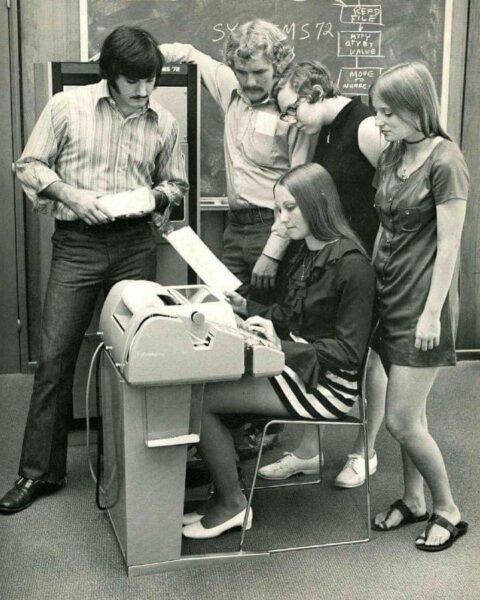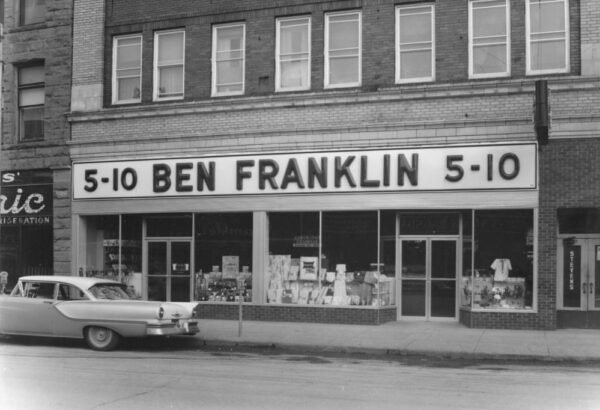
In the early 1970s, a new era was dawning—a digital era that would forever change the way we live, work, and communicate. It was a time when computers, once colossal machines confined to research laboratories, began finding their way into educational institutions. Join us on a journey back to 1972, where we explore what it was like to attend a computer class during this transformative period.
The Dawn of the Digital Age
The 1970s marked a pivotal moment in the history of computing. The introduction of microprocessors and the birth of the personal computer revolutionized the tech landscape. As computers began to shrink in size and cost, educational institutions eagerly embraced this new frontier of learning.
A Glimpse into the Classroom
Imagine stepping into a computer class in 1972. The first thing that strikes you is the room’s unique ambiance. Rows of bulky computer terminals with cathode-ray tube (CRT) monitors stand in stark contrast to today’s sleek laptops and tablets. The distinct hum of these early machines fills the air.
The Mighty Mainframe
The centerpiece of the classroom is the mainframe computer—a powerful, room-filling behemoth that students interact with remotely through terminals. These machines were expensive and required dedicated spaces with controlled environmental conditions to ensure their proper functioning.
Learning the Basics
Computer classes in 1972 were all about learning the fundamentals. Students were introduced to programming languages like BASIC and FORTRAN. They typed code on punch cards or paper tape, a far cry from the user-friendly interfaces we enjoy today. Debugging required a keen eye and the patience to sift through lines of code.
Limited Access
Access to computers was limited, and class time was precious. Students often worked in pairs or small groups, taking turns at the terminals. There was no internet or Google to look up information; instead, textbooks and printed manuals were the primary resources.
The Excitement of Discovery
Despite the challenges, the sense of discovery and innovation in these early computer classes was palpable. Students felt like pioneers, venturing into uncharted territory. Every line of code successfully executed was a triumph.
A Glimpse of the Future
Little did those 1972 computer class students know that they were witnessing the birth of a digital revolution. The computers they worked on, with their limited processing power, were the ancestors of the devices that now fit in our pockets and power our interconnected world.
The Legacy of 1972
Today, as we navigate the digital landscape with ease, we owe a debt of gratitude to those early computer enthusiasts and educators. Their determination and curiosity paved the way for the technological marvels we now take for granted. Computer class in 1972 was more than just a lesson; it was a glimpse into the future—a future that has arrived and continues to evolve at a breathtaking pace.
What types of computers were commonly used in computer classes in 1972? In 1972, computer classes often used mainframe computers and early minicomputers. Mainframes were large, powerful machines that required dedicated spaces, while minicomputers were smaller and more affordable, making them suitable for educational institutions.
What programming languages were taught in computer classes during this time? Students in computer classes in 1972 typically learned programming languages like BASIC and FORTRAN. These languages were foundational in the early days of computing and provided the building blocks for software development.
How did students interact with computers in the classroom? Students interacted with computers in 1972 through computer terminals. These terminals were equipped with cathode-ray tube (CRT) monitors and allowed students to input code and receive output from the mainframe computer, which was often located in a separate room.
Were there any notable challenges in computer classes of that era? Access to computers was limited, and debugging code was a challenging and time-consuming process. Additionally, the absence of modern tools and the need to work with physical punch cards or paper tape made programming more cumbersome compared to today’s standards.
What resources were available to students for learning about computers? Students relied on textbooks and printed manuals as their primary resources for learning about computers. There was no internet or search engines to access information, so knowledge acquisition was largely book-based.
How did the computer class experience in 1972 influence the future of technology and education? The computer class experience of 1972 played a pivotal role in shaping the future of technology and education. It introduced students to the world of computing and programming, fostering a sense of innovation and curiosity that would fuel the digital revolution in the decades to come.
How has computer education evolved since 1972? Computer education has evolved significantly since 1972. Advances in technology have led to more accessible and user-friendly interfaces, online resources, and a wider range of programming languages. Computer literacy has become a fundamental skill in today’s digital age.
Exploring Computers in 1972: A Deep Dive into the Past
The year 1972 stands as a landmark in the history of computing, marking a significant leap towards the technological world we inhabit today. In 1972, computers, though still in their infancy compared to the powerful devices we use now, were beginning to show their immense potential in various fields, including education.
The Evolution of 1972 Computers
During 1972, the landscape of computers was vastly different from what we know now. Computers in 1972 were predominantly mainframe and minicomputers. Mainframe computers, due to their size and cost, were mostly housed in universities and large corporations. Minicomputers, a bit more accessible, started making their way into classrooms, offering a more hands-on approach to learning about computing. This era of computer 1972 technology was crucial in setting the groundwork for the personal computing revolution that would follow in the next decade.
The Significance of Mainframe and Minicomputers
The 1972 computer class experience was largely defined by interactions with these mainframe and minicomputers. For many students, this was their first encounter with computing technology, a momentous step towards demystifying the digital world. Computers 1972 represented not just technological tools but gateways to a new way of thinking, problem-solving, and creating.
Incorporating 1972 Computers into Education
As computers in 1972 started to become more prevalent in educational settings, they brought with them a new curriculum focus on programming and data processing. This was a time when learning to program was akin to learning a new language—a language that would soon become universal in the digital age. The 1972 computers in classrooms were instrumental in introducing students to this new language, despite the limitations and challenges of the technology at the time.
A Link to the Past: Understanding Our Digital Heritage
To truly appreciate how far we have come, one must look back at the origins of our digital journey. For those interested in exploring the rich history of technology and its impact on society, a visit to 🌐 Spin to Learn: The Antique-Style Globe That Enhances Your Knowledge 🌐 provides an engaging perspective on the evolution of technological advancements, including the seminal year of 1972 in computers. This resource offers a unique way to connect with the past, understanding the roots of our digital world.
Reflections on the Impact of Early Computers
The inclusion of computers in 1972 within educational environments marked the beginning of a new era in learning and technology’s role in it. This was a time of discovery, challenges, and the first steps towards a future that would be increasingly dominated by digital technology. The experiences of students and educators with 1972 computers underscore the rapid pace of technological advancement and highlight the foundational role of education in preparing for a digital future.
As an Amazon Associate we earn from qualifying purchases through some links in our articles.




